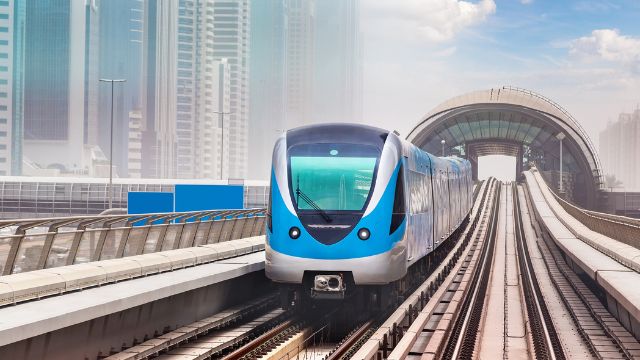If you live in a country where Metro rails were introduced quite recently, then you may think that this is something new. But in reality, the first ever metro rail was introduced in 1863 in London, United Kingdom. However, it was in the year 1890 when the first metro system was introduced and opened for public use. From the very beginning, the concept of an electric train was quite fascinating, and it took the world by storm. People were quick to adapt to this mode of transportation, and they were choosing it over any other method of going from point A to B.
Fast forward to today, and the concept of Metro rails is still relevant. However, over the years things have changed, quite a lot actually. There have been many improvements in the latest metro rails for the maximum convenience of the passengers. But is it all roses and sunshine? Well, that is what we are going to talk about in today’s lowdown on the most prominent advantages and disadvantages of metro rail. Here we go.

Advantages Of Metro Rail
Let’s first take a look at the oh-so-good side of metro rails. Shall we?
1. Time-saving Convenience
First things first, the convenience factor of metro rail is nothing short of a game-changer. Imagine, instead of being crammed into your car, nose-to-tail in a slow-moving traffic snake, you’re zipping beneath the city, getting from point A to B in a snap. No headaches about where to park your car or about the annoying traffic that seems to pop up from nowhere. Metro rail is the fast lane to your destination, taking you where you need to go without you needing to juggle the pressures of driving through the city’s busy life.
2. Environmentally Friendly
Cars and buses belch out harmful emissions, contributing to that nasty thing we call pollution. That’s why riding the metro is like giving Mother Earth a big ol’ bear hug because it doesn’t contribute to all that toxic junk in the air. So, next time you hop on a metro train, give yourself a pat on the back for shrinking your carbon footprint and playing your part in the battle against climate change.
3. Economic Impact
The Metro Rail isn’t just a ride, it’s an economic powerhouse. The construction and maintenance of these rail systems create jobs, stirring up the local economy like a finely tuned machine. And cities that invest in public transportation often see a ripple effect. It’s like throwing a small stone in a pond; these investments can bring life back to forgotten areas, stimulating growth and even boosting property values. The Metro Rail is like the golden goose for communities, keeping the wheels of economic progress turning.
4. Safety
When it comes to safety, Metro Rail is quite trustworthy. They operate in their own cozy bubble, on dedicated tracks, far from the chaos of road traffic. They’ve got safety measures downright perfect like surveillance cameras, emergency response systems, and stringent protocols. It’s like having a personal security detail that ensures you’re safe and sound during your journey. So, all you need to do is relax and enjoy the ride.
5. Reduced Congestion
You will never hear someone say that they like being stuck in a traffic jam. Correct? Well, the Metro Rail is the ultimate solution to that, drastically cutting down road congestion. Picture a world with fewer cars on the road, a world where commuting isn’t synonymous with frustration. This means you get more ‘you’ time, for things that matter or simply bring joy to your life. The Metro Rail is about letting people escape the chains of traffic, giving them time that they would otherwise spend staring at the bumper of the car in front.
Disadvantages Of Metro Rail
Now it would be quite unfair to ignore the downsides or less shiny side of metro rails. Don’t you think? Let’s talk about just that.
1. Restricted Paths
Suppose you’re all excited about your first ride on the Metro Rail. You’ve got your route mapped out, but wait a second, it doesn’t go where you need it to. One of the major bummers about the Metro Rail is its lack of routes. A Metro rail sticks to specific tracks, and if you’re not living or working near those, well, that doesn’t sound particularly good! So, you’ll probably still need to catch a bus, take a taxi, or worst case, lace up your walking shoes to get to your final destination.
2. Overcrowding during Peak Hours
Ever tried to squeeze yourself into a tin can during rush hour? If you’ve hopped on the Metro Rail during peak times, you’ve lived to tell the tale. The jam-packed conditions can make your commute a test of patience and agility, not to mention safety. This can be particularly tough on the elderly, those with disabilities, or the brave souls attempting to lug around heavy bags.
3. Regular Maintenance Interruptions
Just like us humans, Metro Rails need their check-ups too. While regular maintenance is crucial for keeping things running smoothly and safely, it’s no secret that these tune-ups can cause some major hiccups in the service. Unexpected disruptions? Check. Delayed arrivals? Check. Commuters left feeling a bit disappointed? Double-check.
4. Vulnerability to Power Outages
If there’s one thing Metro Rails love more than their tracks, it’s electricity. These energy gluttons rely heavily on their electric diet to stay moving. This poses a problem when there’s a power outage or some sort of electrical issue, especially in the face of extreme weather conditions. Suddenly, your dependable ride might not be so dependable.
5. Prohibitive Costs
Finally, let’s talk about money. Installing and maintaining a Metro Rail system isn’t exactly a cheap affair. The costs of keeping the Metro Rail in tip-top shape often find their way into ticket prices and can make it an expensive option for some, especially those on a tighter budget. So, while it’s a modern, efficient way of traveling, it might not be the most economical choice for everyone.
Conclusion
All in all, it is true that the metro rail systems have significantly improved urban transportation in the last century or so. However, there are some issues that as the general public, we have to deal with when traveling in these electric trains. But we can all agree that metro rails deserve appreciation. Right?
Santosh Kumar, the author behind IndiasStuffs.com, is passionate about sharing valuable insights on a variety of topics, including lifestyle, technology, and Indian culture.
Page Contents

